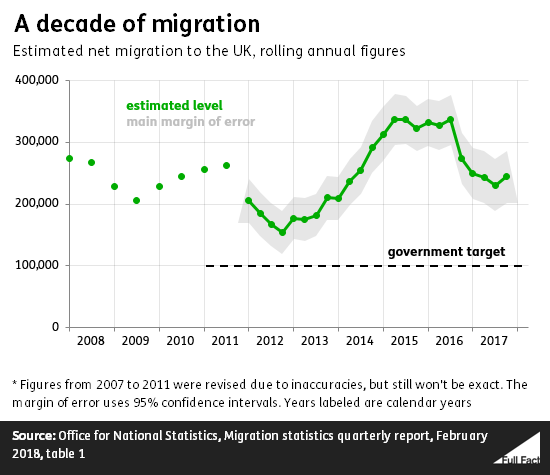“[The Home Office] set the tone which was this, we have to cut immigration down to tens of thousands. They knew they weren’t going to be able to do that, because it was free for people to move about from Europe, so the only way that they could cut back on immigration was [to cut] people who came from outside of Europe."
Emily Thornberry MP, 19 April 2018
It’s correct that governments since 2010 have set a target to reduce net migration to the tens of thousands, and this target has never been met. Net migration actually rose to more than three times the target at one point and latest figures for the 12 months to September 2017 estimate it at 244,000.
Net migration is the difference between the number of people immigrating to the UK in a year and the number of people emigrating abroad.
In order to meet the target the government would have had to reduce non-EU immigration heavily, because it can’t control the scale of EU (including British) immigration to the UK due to the EU’s rules on free movement. It made some early progress towards this in 2012 and 2013, but the numbers have risen back to roughly 2010 levels again.
So even without any EU net migration, the target would only have been met in parts of 2012 and 2013.
The government actually looked unlikely to meet the target as early as 2011, when its own impact assessments of its policies suggested reductions to non-EU immigration wouldn’t be enough to meet the target. The Migration Observatory at the University of Oxford said at the time that “current policies can be expected to deliver about half the reduction in non-EU net migration required to achieve the tens of thousands target by 2015”—though it stressed there was a great deal of uncertainty to all of the estimates.
